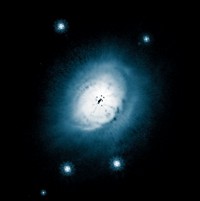Advertisement
Grab your lab coat. Let's get started
Welcome!
Welcome!
Create an account below to get 6 C&EN articles per month, receive newsletters and more - all free.
It seems this is your first time logging in online. Please enter the following information to continue.
As an ACS member you automatically get access to this site. All we need is few more details to create your reading experience.
Not you? Sign in with a different account.
Not you? Sign in with a different account.
ERROR 1
ERROR 1
ERROR 2
ERROR 2
ERROR 2
ERROR 2
ERROR 2
Password and Confirm password must match.
If you have an ACS member number, please enter it here so we can link this account to your membership. (optional)
ERROR 2
ACS values your privacy. By submitting your information, you are gaining access to C&EN and subscribing to our weekly newsletter. We use the information you provide to make your reading experience better, and we will never sell your data to third party members.
Astrochemistry
Cell membrane ingredient detected in space
Ethanolamine may be abundant in the universe
by Sam Lemonick
June 3, 2021
| A version of this story appeared in
Volume 99, Issue 21
This molecule, a component of the lipid membranes that protect biological cells, could serve as a prebiotic feedstock to seed the evolution of life on other planets (Proc. Natl. Acad. Sci. U.S.A. 2021, DOI: 10.1073/pnas.2101314118).
Cellular membranes are made from a double layer of phospholipid molecules, with water-soluble heads on the outside and fatty tails on the interior. This structure holds the membrane together and keeps most molecules from entering the cell. Phosphatidylethanolamines are among the most common phospholipids and found in Escherichia coli.
A team led by Víctor M. Rivilla of Spain’s National Institute of Aerospace Technology and the Arcetri Astrophysical Observatory detected the infrared signature of ethanolamine in the Sagittarius B2 molecular cloud.
Ethanolamine has previously been found in a meteorite, but it wasn’t clear how it formed and whether that chemistry could be widespread, Rivilla says. By contrast, he says, the presence of the molecule in the gas cloud shows that ethanolamine is abundant in space. “This means that the natal material of solar and planetary systems contain large quantities of ethanolamine,” Rivilla says in an email.
“Even if the conditions for the birth of life are very demanding,” he says, the chances of it arising improve if one possible ingredient is widely available.





Join the conversation
Contact the reporter
Submit a Letter to the Editor for publication
Engage with us on Twitter